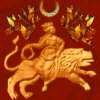
![]()

![]()
| Our Roman city of Tarraco enjoyed a well-delineated golden age spanning nearly five centuries, born, as Titus Livius describes, through the devoted efforts of the Scipio family, in the year DXXXVI after the founding of Roma. The Senate of the Roman people established a strong foothold in Hispania in fulfillment of treaty obligations to our allied city of Saguntum, attacked the previous year by Carthaginian forces under Hannibal. Prior to the opening of the Second Punic War, Tarraconensis had been largely a land of Celtic Iberian nomads and the growing presence of Greek trading settlements on the coast. Cn. Cornelius Scipio accompanied two legions to the Greek settlement of Emporion, but Hannibal was already advancing toward Italia with his elephants and armies. The efforts of the Scipios were redirected toward establishment of Tarraco as a great fortress to block further reinforcements from the Poeni in Baetica, to the south. Several Roman victories led to the recapture of Saguntum after four years. In the following year, however, the brothers Scipio met tragic defeat and death at the hands of Hasdrubal (Hannibal's own brother) commanding the mass of forty thousand mercenary troops. |
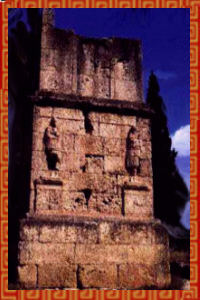
| After the passage of another four years, the Scipios and Roma were avenged in victory at Cathago Nova, by another scion of this great family, Publius Cornelius Scipio. I have described elsewhere the vents which led to the summoning of Magna Mater to Roma and the subsequent defeat of Hannibal in the year DLII of Roma's founding. Above, you see an image of what is called Scipio's Tower, but actually the figures are of Attis, divine consort of Magna Mater. Cybele is much loved in this provincia and I find myself in the companionship of many of Her devotees. |
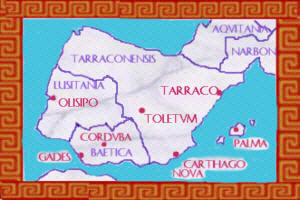
| Though Hispania continued to be a land of frequent insurrections during the next two centuries, Tarraco and its surrounding provincia steadily grew in importance, both under the Republic and with Imperial rule as well. In fact, under Augustus, DCCXLI years after the founding of the Eternal City, the boundaries of the Imperial province of Tarraconensis were constituted as they appear in the map above. The region grew in both cultural sophistication and economic development, noted for exports of silver, grain, garum, and other agricultural products. Tarraconensis gave birth to the first Senators from outside the Italian peninsula. The Empire initiated a cycle of great public works and development projects ... among them, the building of the Via Augusta, which connected the cities and towns of the eastern coast, and the great aqueduct of Tarraco, as depicted below. |
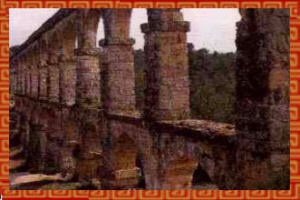
| As a digression, I had often wondered about the connection between the name of the city and one of my favorite spices in cooking, tarragon. The connection would seem obvious in the cuisine of Hispania, but research indicates that it is not so certain. The name of tarragon originates in draco, dragon, through Spanish and prior Greek origin. Perhaps the spice has lent its name to the provincia and city? It is an intriguing speculation. |
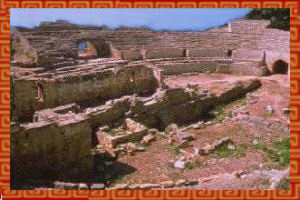
| Cycles of birth, death, and regeneration are ubiquitous in nature as well as in the affairs of humanity, and the century of Roma's Millenium brought with it a decline for many complex reasons. Thirteen years after that Millennium, dark days indeed came. Emperor Valerian had been captured by the enemies of Roma and his successor, Gallienus, was powerless to stop the onslaught of marauding Frankish barbarians, who inflicted devastation upon the city of Tarraco. In the next generation, Diocletian further subdivided the provincia in an effort to improve administration, but economic life was irreversibly failing, perhaps worsened by some of the political remedies applied with best intention. Roman culture and administration continued another two centuries until finally cast asunder by Vandals and Visigoths. The irony, and ultimate triumph of Romanitas, is that these very barbarians absorbed so much from Roman civilization, that it can be truly said that the Genius of Roma never perished but remains alive in a plethora of daughter civilizations across the reaches of ages and uncharted seas. |
